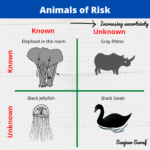Process and portable building siting has attracted further interest following the BP Texas city incident. Because of the proximity of office buildings to chemical processes, it is likely that people inside of a building be subjected to higher risks from process hazards than outdoor personnel.
A facility siting study is used to assess location, construction and function of process buildings to minimize risks to indoor personnel from fire, explosion and toxic hazards. The basis for the hazard assessment is loss of containment within the process units. API-752/753 provide further guidance on building siting.
Toxic Release
The extent of a toxic release is based on toxicant’s ERPG-3 value and for occupied buildings where ERPG-3 value is exceeded we recommend the following risk mitigation measures:
- Detection and alarm system for toxic(s)
- Quick and automatic shutdown of HVAC system of building
- Provision of Shelter-in-Place (SIP)
- Adequacy of emergency procedures
Fires and Explosions
A flammable vapor release can result in a jet fire, pool fire or flash fire and in presence of congestion/semi-congestion a fire can lead to an explosion. Based on siting studies we performed, the most critical value determined during a siting study is potential explosion overpressure.
The overpressure depends on
- explosion model used,
- congestion level and volumes present in the plant, and
- finally, the flammable mass of the released cloud.
In addition, the overpressure values depend on location of ignition sources since the location of explosion center is determined by immediate or late ignition.
The overpressure values form the basis for structural risk mitigation plans.
Risks Mitigation Measures
If fire, explosion or toxic hazard footprints impact a building in question, a more detailed risk assessment is performed. This additional risk analysis includes an assessment of the likelihoods of various scenarios along with a detailed analysis of consequences. For example, explosion overpressure may result in flying debris leading to an indoor fatality; however, it is highly conservative to assume that a certain threshold overpressure will result in 100% indoor fatalities.
If a building may experience potential fatality risks then there are three options:
- Relocate the non-essential personnel outside the plant area
- Reinforce existing building so that it can withstand higher pressures
- Replace existing building with a blast resistant structure. The blast resistant buildings and offices may in fact cheaper than reinforcement
Depending on the exact risks you can choose a suitable solution; however, it is always a good practice to relocate non-essential personnel away from the processing areas.






One Response
Very good blog Mr. Saraf !!
Thank you for your invitation.